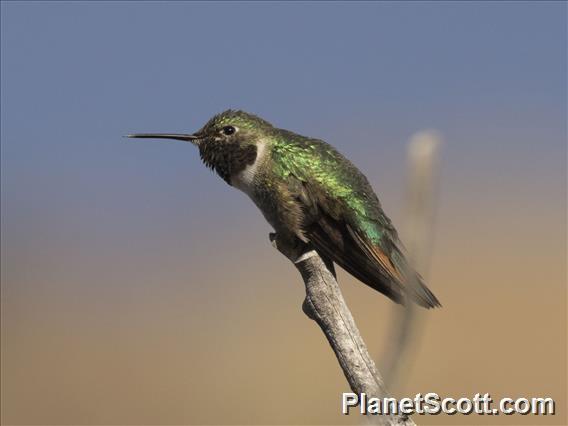Broad-tailed Hummingbird (Selasphorus platycercus)

Broad-tailed Hummingbird (Selasphorus platycercus)
×


Broad-tailed Hummingbird (Selasphorus platycercus)
About Broad-tailed Hummingbird (Selasphorus platycercus)
- Kingdom: Animals
- Phylum: Chordates
- Class: Birds
- Order: Hummingbirds and Swifts
- Family: Hummingbirds
The broad-tailed hummingbird is a medium-sized hummingbird species found in highland regions from western United States and Western Canada to Mexico and Guatemala.
Source: Wikipedia
Lifelists
Trips
Visits
-
2014-05-09
Portal--Big Thicket, United States of America -
2014-05-11
Miller Canyon, United States of America -
2018-04-22
Big Bend National Park, United States of America




